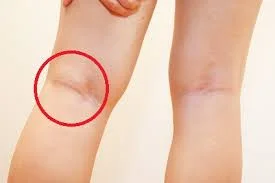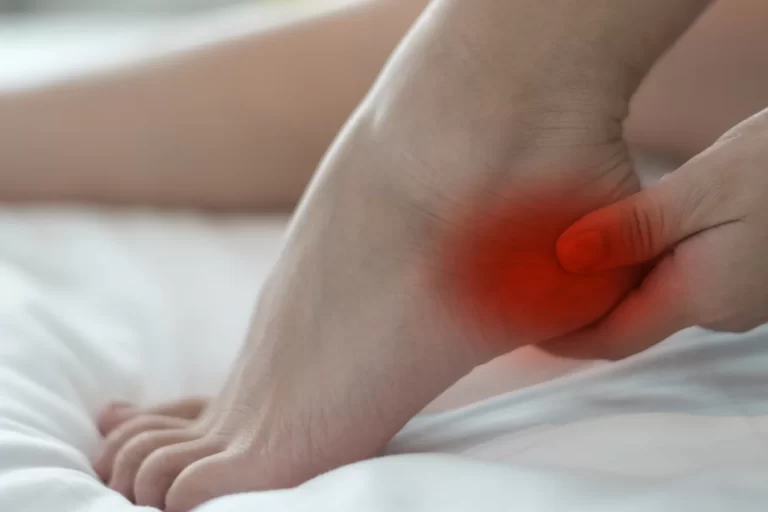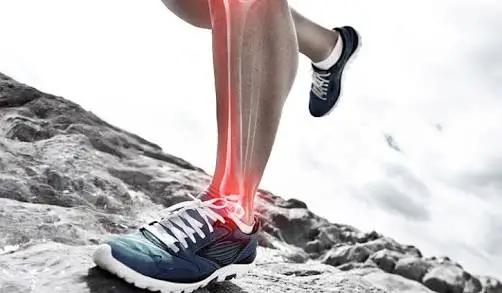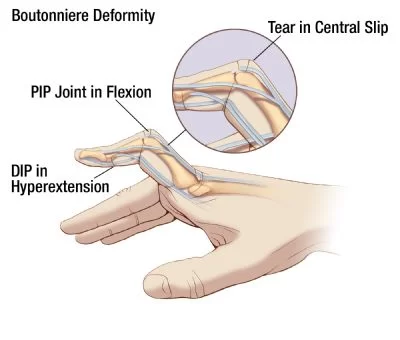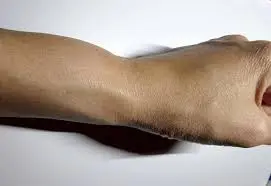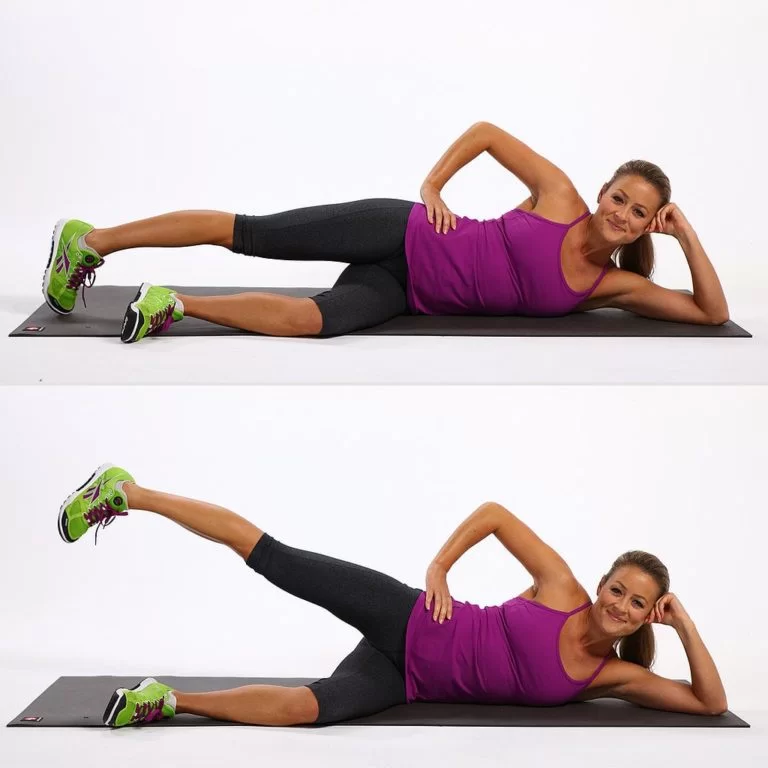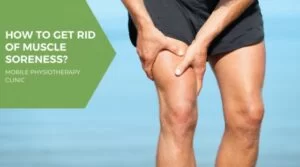Puffiness Behind The Knee
Introduction
Puffiness behind the knee or swelling in the popliteal fossa or Swelling behind the knee can be caused by several different things. A Baker cyst causes inflammation of the popliteal bursa in the back of the knee.
A Baker cyst could be the cause of swelling behind one knee. This can develop when a bursa, or cushioning pouch, in the rear of the knee, is filled with joint lubricant. A bulge behind the knee that is filled with fluid is called a Baker cyst. It produces an enlargement and a bulge.
There may be a lump behind the knee without any associated pain, or there may be swelling and soreness at the back of the knee. There could be swelling behind both knees, or it could just be one swollen knee.
The majority of the time, physical therapy, exercises, compression bandages, rest, and regular ice can be used to reduce swelling in the back of the knee; but, in certain cases, knee surgery may be necessary.
What Causes Swelling Behind The Knee?
Swelling behind the knee can be caused by several different things. The soft area at the back of the knee, known as the popliteal space, is typically the site of an abnormal growth or fluid accumulation that results in swelling in the back of the knee.
we’ll examine six typical reasons for swelling behind the knee, along with their corresponding symptoms, how to diagnose a significant lump behind the knee, and the most effective treatments for each.
- Baker’s Cyst
A Baker’s cyst, also known as a popliteal cyst, is by far the most frequent cause of swelling behind the knee. It manifests as a big, soft bump behind the knee.
A Baker’s Cyst: What Is It?
Inflammation of the popliteal bursa, a little fluid-filled sac located in the rear of the knee, leads to the development of a baker’s cyst.
The gastrocnemius muscle of the calf and the semimembranosus tendon of the hamstrings are situated between the popliteal bursa. Smooth and painless knee movements are made possible by the bursa’s assistance in lowering friction between the two muscles.
Why Do Baker’s Cysts Occur?
A fluid-filled sac that surrounds the knee joint lubricates it and supplies the nutrients it needs to remain healthy.
The knee creates more fluid when it is hurt or damaged to lubricate the joint, preserve it, and hasten healing. Occasionally, extra fluid might leak out of the joint and accumulate in the popliteal bursa, enlarging it. A Baker’s cyst is a bulge that develops behind the knee due to increased swelling.
About half of all people with knee arthritis will at some point develop a Baker’s cyst; osteoarthritis is the most prevalent cause of swelling behind the knee from a Baker’s cyst. In addition to meniscus tears and ligament sprains, other knee ailments can also cause a popliteal cyst, such as gout knee, an inflammatory form of arthritis.
Baker’s cyst symptoms primarily include:
- A Baker’s cyst is felt behind the knee and feels like a little, squashy orange. It is felt as a palpable pocket of swelling in the popliteal fossa.
- Individuals who have a popliteal cyst may experience mild back knee edema before developing knee discomfort. More noticeable swelling and pain behind the knee will develop as the knee cyst swells and expands; this is especially painful while bending the knee as it compresses the popliteal cyst.
- Pain usually travels down toward the ankle if the popliteal cyst behind the knee ruptures, allowing fluid to leak into the leg.
- Popliteal cyst pain and swelling behind the knee can be effectively treated, but if treatment is not received, there is a significant chance of recurrence. Learn more about Baker’s Cyst Treatment.
2. Hamstring Injuries
Hamstring injuries cause posterior knee swelling. causes, signs, diagnosis, and course of care
A hamstring injury, usually a hamstring strain/tear or hamstring tendonitis, is another common reason for swelling behind the knee.
Three muscles, located just below the knee, extend down the back of the thigh from the pelvis to the back of the tibia. These muscles make up the hamstrings.
Because the hamstrings pass over into the hip and knee joints, they are especially weak to damage. When the hip is bent and the knee straightens, as it does during sprinting or kicking, they are weak.
An overuse condition known as hamstring tendonitis occurs when a hamstring tendon becomes inflamed and degenerates due to repeated tension. Usually developing gradually over time, symptoms can include:
knee stiffness and weakness caused by swelling behind the knee as the tendon thickens, or soreness in the back of the thigh that increases with activity
When one of the hamstring muscles is abruptly overworked or overextended, a hamstring strain happens. Depending on the degree of damage, there are three classes of hamstring strain. After an accident, the following symptoms are typically seen right away and may last for several weeks:
- Popping or tearing noise made at the moment of trauma.
- Swelling and bruises in the back of the leg and behind the knee.
- With grade 3 injuries, there will be powerful restrictions with mobility and functional abilities as well as a major loss of strength, power, and range of motion.
- The sections on hamstring tendonitis and pulled hamstrings contain comprehensive information regarding hamstring problems, including how they cause discomfort and swelling below the knee and how to treat them.
3. Gastrocnemius calf tear.
Gastrocnemius Tear Pain and swelling behind the knee are frequently caused by a gastrocnemius calf tear.
Another potential reason for swelling behind the knee is a tear in the gastrocnemius muscle, one of the calf muscles.
When the calf muscle is unexpectedly overstretched, usually by pushing off via the foot with force, a gastrocnemius rupture occurs.
Typically, gastrocnemius tears happen when playing tennis, jumping, or running—especially on hills.
4. Bursitis
When the bursae, which are fluid-filled sacs in the knee, become inflamed, bursitis results.
Swelling results from an inflammatory reaction in the knee. Pain may result from the swelling’s pressure on other knee components.
The most frequent causes of bursitis are knee damage from blunt force injuries or prolonged kneeling.
A doctor examines the knee and may prescribe scans, such as an MRI or X-ray, to identify this. If the bursitis is the underlying reason, a mix of the following treatments may be used:
Compression with cold packs, elevating the knee, resting, and taking NSAIDs (nonsteroidal anti-inflammatory medicines) to relieve discomfort, like ibuprofen
4. Arthritis
Another common reason for knee swelling is arthritis. Even when an individual with arthritis has underlying chronic inflammation, they may yet exhibit the five essential indicators of acute inflammation.
The Arthritis Foundation states that knee swelling can result from some different forms of arthritis, including:
- The most prevalent type of arthritis is osteoarthritis, which is caused by the degeneration of knee cartilage; rheumatoid arthritis is an inflammatory type of arthritis where the immune system attacks the joints unnecessarily.
- Juvenile arthritis, which affects those 16 years of age and younger; reactive arthritis, a chronic form that frequently follows genital or urinary tract infections; infectious arthritis, which happens when an infection results in joint swelling; and gout, a type of arthritis caused on by an accumulation of uric acid in the blood.
They will look up the patient’s medical history and inquire about any additional symptoms. They might also request imaging tests like an X-ray and blood work.
The optimal course of treatment varies depending on the kind of arthritis but may consist of:
- Drugs for pain management, like NSAIDs.
- Lifestyle adjustments, like physical treatment and exercise.
- Corticosteroids.
- Antirheumatic medications that change illness.
- Surgery and assistive technology.
5. Acute injuries
Sports, exercise, and incidents involving blunt force trauma to the knee can all lead to acute injury. Among the frequent types of acute knee injuries are:
- Sprains are caused by a sharp twist, turn, or blow to the muscles or ligaments surrounding the knee.
- Overuse of a tendon or joint leading to tendonitis.
- Trauma-induced cartilage tears.
- To evaluate the damage, a physician may do imaging tests like an MRI, CT, or X-ray.
Treatment options could include a mix of:
- Resting.
- Using assistive technology, such as braces.
- Using NSAIDs.
- Receiving occupational or physical therapy.
- Having surgery.
6. Infections
The following types of infections might result in knee swelling:
- Lupus, is a chronic illness that attacks healthy tissues, particularly the joints, with the immune system
- Tick-borne Lyme disease can produce flu-like symptoms, rash, and joint swelling.
- A physician can use testing to determine whether the swelling is caused by an infection. In cases where the infection is bacterial, such as Lyme disease, they could recommend antibiotics.
The following are typical signs of a gastrocnemius tear:
- The sound “Pop”: at the moment of harm
- Quick Back of the calf pain that may spread down the leg and into the back of the knee
- Swelling in the calf and behind the knee
- Injuries and discolorations
The muscle at the point of the tear has a palpable dip.
- Tenderness: the ability to stroke a tear
- Calf Weakness: Calf Especially while pushing off with the foot, weakness
- Most males with gastrocnemius tears who experience swelling behind the knee are in their 40s and 50s. The degree of the rip and the percentage of the calf muscle that is torn will determine how much swelling and discomfort is felt in the back of the knee. The larger the tear, the more fibers are destroyed, and the more swelling and pain are felt in the back of the knee.
Treatment for calf tears should be started as soon as possible to minimize pain and swelling behind the knee, hasten healing, and stop additional calf and knee injuries. Learn more about treating calf tears.
7. Popliteal Aneurysm
The primary artery at the back of the knee, the popliteal artery, can develop an abnormal bulge called a popliteal aneurysm. Popliteal aneurysms are the most common cause of swelling behind the knee without discomfort, and they typically show no symptoms.
Under the knee, popliteal aneurysms produce edema. causes, signs, and available treatments
The characteristic palpable pulsating mass behind the knee is a popliteal aneurysm. Partially bent knees make it easiest to see this swelling behind the knee.
Bilateral popliteal aneurysms, or swelling behind both knees, affect about 50% of patients.
A large enough popliteal aneurysm mass behind the knee may push on nearby nerves, resulting in calf numbness, weakness, and/or pins and needles.
Popliteal aneurysms typically have unclear causes, however, some factors, including smoking, atherosclerosis, inflammatory processes, and genetics, might contribute to their development.
The popliteal artery bulges as a result of a buildup of tiny blood clots and a weakening of the arterial wall. These blood clots have the potential to rupture and obstruct the leg’s smaller arteries, producing discomfort and decreasing blood flow. If left untreated, this might result in tissue death and prompt amputation.
Ultrasonography is generally used to diagnose popliteal aneurysms, which usually require knee surgery.
8. DVT
The condition known as deep vein thrombosis, or DVT, is an uncommon but dangerous source of pain and swelling behind the knee and leg. A DVT is a type of blood clot that usually forms in the thigh or calf and occurs in one of the deep veins. DVTs lower blood flow in the vein; occasionally, a portion of the clot breaks off and moves up toward the heart, increasing the risk of a heart attack or stroke.
Typical indications of a DVT include:
- Squeezing or piercing Ankle, calf, or thigh pain
- Lump behind the knee, calf, or thigh due to swelling
- Skin Redness: or darkening surrounding the painfully swollen area
- Warmth: in the surroundings of the affected area
- Unilateral: Typically, symptoms only impact one leg
Risk Factors for developing a DVT include:
- DVTs can result in warmth, redness, swelling, and pain in the back or knees.
- Being overweight
- Tobacco Use Dehydration
- Prior DVT Procedure
- Some drugs, such as HRT or the contraceptive pill
- Some medical disorders, such as varicose veins and heart failure
- Extended inactivity, such as during traveling or resting in bed
- Anticoagulants, or blood thinners like warfarin, are typically used to treat DVT-related swelling below the knee, calf, or leg. These treatments must be taken for at least three months to lower the chance of repetition.
Seek emergency medical attention if you think you may have a DVT lump behind your knee. This is especially important if you also have dyspnea or chest pain.
9. Synovial Sarcoma:
A cancerous development behind the knee is called a synovial sarcoma.
A knee synovial sarcoma. an unusual yet dangerous reason for a knee lump.
Sarcomas are uncommon causes of swelling behind the knee, but they are dangerous and need to be treated right away.
Young adults are most likely to develop sarcomas, which usually show as a bump behind the knee that is:
- More than 5 cm
- Increasing in size
- The National Institute for Clinical Excellence’s (NICE) guidelines suggest that a soft tissue lesion—that is, a lump behind the knee that is more than 5 cm in diameter and growing in size—needs to be investigated right away with an ultrasound or CT scan, but this is not always the case.
If the scan indicates that the lump behind your knee is a sarcoma, you will be referred to a team of experts for treatment. Depending on the stage and grade of the sarcoma, this treatment plan may include radiation therapy, chemotherapy, or surgery.
10. cramping of the legs
A cramp is a tight muscular spasm. Although the muscles in the calves are more prone to cramping, other leg muscles, such as those in the back of the thigh near the knee, can also be affected.
Leg cramps are more common during pregnancy and after energetic physical activity. Other possible explanations include:
- Nerve problems in your legs Dehydration diseases, such as tetanus toxins, lead or mercury in the blood
- When you experience a cramp, your muscle will suddenly constrict, or spasm. Ten minutes to a few seconds is how long the pain lasts on average. The muscle may be sore for a few hours following the cramp.
11. Jumper’s knee:
Jumper’s knee is an injury to the tendon, which is the cord that joins your shinbone to your kneecap (patella). Another name for it is patellar tendonitis. When you jump or change direction, like when playing basketball or volleyball, it can happen.
Tiny tears in the tendon may result from these motions. The tendon eventually swells up and becomes weaker.
Pain beneath the kneecap is a result of the jumper’s knee. With time, the pain becomes worse. Additional signs and symptoms consist of:
- A weak point, stiffness,
- Difficulty bending and straightening your knee.
11. Gastrocnemius tendonitis (calf strain)
Your calf, or rear of the lower leg, is made up of the gastrocnemius and soleus muscles. These muscles help you point your toes and bend your knees.
Tennis and squash are two sports that can cause strain or tears in the gastrocnemius muscle because they require rapid transitions from a standing to a running position. The sudden pain in the back of your leg will indicate that this muscle is strained.
Additional signs and symptoms consist of:
- Discomfort and edema in the calf
- Soreness in the calf difficulty walking on tiptoe
- Depending on the size of the tear, the pain should go away. It will heal more quickly if you rest, elevate the injured leg, and apply ice to the area.
Additional signs and symptoms consist of:
- Discomfort and edema in the leg.
- Bruises on the leg.
- Difficult to balance on tiptoe.
- Depending on the size of the tear, the pain should go away. It will heal more quickly if you rest, elevate the injured leg, and apply ice to the area.
12. Meniscus tear
Your knee joint is stabilized and cushioned by the meniscus, a wedge-shaped piece of cartilage. There are two menisci in each knee, one on each side of the knee.
When an athlete squats and twists their knee, the meniscus may be torn. With age, your meniscus weakens and degenerates, making it more likely to tear from any twisting motion.
When a meniscus tears, there may be a “popping” sound. The damage may not be painful at first. However, after a few days of walking on it, the knee may suffer much worse.
Additional signs of a meniscus tear include:
- Knee stiffness.
- Enlargement.
- Fragility.
- Bending or releasing the knee joint.
13. Anterior cruciate ligament injury
The anterior cruciate ligament (ACL) is a band of tissue that goes through the front of your knee joint. It helps stabilize and allow movement for your knee by joining your thighbone to the shinbone.
The majority of ACL injuries occur when a runner abruptly changes direction, slows down, or stops. In contact sports like football, you run the risk of spraining or tearing this ligament if you land jump incorrectly or are struck.
The injury could “pop” when it happens. Your knee will ache and swell after that. You may experience pain when walking and find it difficult to fully extend your knee.
ACL strain recovery can be aided by physical therapy and rest. It is frequently necessary to have surgery to repair a torn ligament.
14. Posterior cruciate ligament injury
The posterior cruciate ligament (PCL) is the ACL’s companion. It is an extra ring of tissue that connects your shinbone to your thighbone and supports your knee. It is worth noting that the PCL is less susceptible to damage than the ACL.
A powerful impact on the front of your knee, such as in a car accident, might damage the PCL. Injuries can occur when walking and twisting the knee or forgetting a step.
A strain is the result of overstretching the ligament. A sufficient amount of pressure can cause the ligament to split in two.
In addition to pain, a PCL injury results in:
- Knee edema.
- Rigidity.
- Difficulties when walking.
- A weakening of the knee.
15. Chondromalacia
When a joint’s cartilage degrades, the condition known as chondromalacia results. The rubbery substance called cartilage keeps your bones from rubbing against one another when you move.
Chondromalacia can result from a knee injury or from the knee gradually wearing down due to aging, arthritis, or overuse. The patella, or area beneath the kneecap, is where cartilage degradation occurs most frequently. The knee bones rub against one another and hurt when the cartilage is gone.
The primary complaint is a dull ache located behind the kneecap. If you climb stairs or sit for a long period, the pain might get worse.
Additional signs and symptoms consist of:
- Difficulty extending your knee past a certain distance
- A weak spot or a buckle in the knee
16. Grinding or cracking sensation
when bending and straightening your knee Physical therapy, ice packs, and over-the-counter painkillers can all help with the discomfort. Chondromalacia is a permanent condition once cartilage is harmed. The cartilage damage can only be repaired surgically.
What Other Possible Reason Could It Have?
See the section on back knee pain for a wealth of further information. Different conditions can produce discomfort behind the knee without usually producing much, if any, swelling in the back of the knee.
If, on the other hand, there is swelling around the knee rather than only at the back, go to the section on swollen knees. You can learn more about swelling on the side of the knee, front knee swelling, swelling below the knee, and swelling above the knee. Alternatively, the swelling might be in a different area of your knee.
Common symptoms of Puffiness behind the knee
An indication of inflammation is swelling. It is an accumulation of fluid surrounding a damaged area that typically results in the area getting bigger and puffier.
Different kinds of inflammation exist. In the knee, for example, a person may have:
- Effusion, or internal joint swelling.
- Tissue edema, or swelling surrounding the joint.
- Hemarthrosis, or inflammation and blood clots in the joint.
Swelling that results from inflammation can be either acute or persistent. After an accident, there may be acute swelling that goes away in a day or two. Much longer-lasting chronic swelling may be an indication of an underlying medical issue.
Here are the top five (Trusted Source) indicators of acute inflammation:
- Pain
- Full or partial loss of function
- Heat
- Redness
- Swelling
Treatment for Swollen Knees
The underlying cause of the lump behind the knee will play a role in determining the best course of action for treating swelling behind the knee. However, the majority of the time, treating swollen knees begins with a mix of:
- Rest, Ice Compression, and Elevation (RICE)
- Steroid Injections: Medicine for Aspiration
Home remedies
One could attempt the following at home to lessen knee swelling:
- Raising the afflicted limb.
- Rubbing the knee and leg.
- Applying a cloth-wrapped ice pack to the knee for 15–20 minutes at a time, a minimum of once a day.
- Carrying out workouts that strengthen the knee-supporting muscles.
- Applying steady pressure on the knee joint with a band or compression sleeve.
- Using anti-inflammatory over-the-counter drugs.
Physical therapy
Depending on the underlying cause, physical therapy may be quite helpful in reducing swelling behind the knee. Here’s how it could be advantageous:
Overall advantages:
- Pain and swelling reduction: Mild exercise can enhance lymphatic drainage and circulation, which can help reduce fluid retention and provide pain relief.
- Improving range of motion: Certain exercises will help the knee joint restore lost range of motion, which will make tasks like walking and climbing stairs simpler.
- Muscle building: By building up the surrounding muscles, especially the hamstrings and quadriceps, you can support your knee joint and avert more swelling episodes.
- Increasing flexibility: Reducing tightness and discomfort and facilitating easier mobility overall can be achieved by strengthening the muscles and ligaments in the legs.
- Helping the healing process: Certain exercises can speed up the healing process following surgery or injuries.
Particular uses according to cause:
- Baker’s cyst. Physical therapy isn’t the main treatment for Baker’s cyst, but it can help. Mild exercises that target the hamstrings and calves can strengthen and stretch them, which can help prevent further cyst formation.
- Bursitis: Joint strengthening and bursa inflammation reduction are achieved with exercises that focus on the muscles surrounding the knee and hip. Stretches, low resistance training, and isometric exercises—muscle activation without movement—may all fall under this category.
- Meniscus tear: Physical therapy is important for meniscus tear rehabilitation after initial pain and inflammation control. The main goals of the exercises are to increase proprioception (joint awareness), strengthen the surrounding muscles, and restore range of motion. The particular approach will depend on the location and degree of the passing away.
Things to keep in mind:
- A thorough treatment plan supervised by a physician or physical therapist should include physical therapy.
- The particular activities that are recommended will change based on the kind and severity of your illness.
- It’s important to pay close attention to the therapist’s advice and avoid painful or uncomfortable activities.
- Have patience, as it may take some time to see benefits. Consistently following the treatment plan is also necessary for the best outcomes.
When to visit a physician
If knee pain increases during rest or accompanies other symptoms, see a physician. See a doctor right away if you have a sudden injury, like a blunt force trauma.
In addition, if there are any signs of an infection—such as a fever or pus emerging from a wound—it’s important to seek medical attention from a physician.
Risk Factors
Additional factors
- Overuse: Activities like sprinting, jumping, and squatting that put repetitive tension on the knee joint can cause swelling and inflammation behind the knee.
- Obesity: Carrying too much weight strains the knee joints, raising the possibility of swollen knees and accidents.
- Age: As we become older, our knees’ cartilage deteriorates and becomes less resistant to strains and swelling.
Other risk factors:
- A history of shared issues in the family
- Some drugs, including corticosteroids
- Past history of knee injuries
a few more suggestions for reducing your risk of developing puffiness behind the knee:
- Maintain a healthy weight
- Make the muscles surrounding your knee joint stronger.
- Exercise before warming up and cooling down after.
- Put on supportive footwear.
- Stay away from painful activities.
- When engaging in activities that require repeated knee movements, take rests.
Prevention
It’s important to address potential risk factors and form good habits related to joint health in order to prevent puffiness behind the knee. The following are some useful tactics:
Strengthening and flexibility:
- Pay attention to your calf, hamstring, and quadriceps muscles: Robust leg muscles lessen strain on the bursa and tendons behind the knee while stabilizing the knee joint. Frequent workouts such as lunges, hamstring curls, and squats can be beneficial.
- Maintain your flexibility: To increase your range of motion and avoid tightness, apply stretches for your quadriceps, hamstrings, and calves into your exercise regimen.
Managing inflammation:
- Keep your weight in check: Being overweight strains your knees more than necessary, raising the possibility of swelling and inflammation.
- Minimize inflammation caused by current conditions: If you have arthritis or other conditions that make your knees swell, make sure you take proper care of them by following your doctor’s recommendations for medication, physical therapy, and lifestyle modifications.
- Minimize impact activities: To lessen the strain on your knee joint, choose low-impact activities like swimming, cycling, or elliptical training.
Preventative measures:
- Proper warm-up and cool-down: To prevent injury, give your muscles enough time to warm up before and after any exercise. Then, use gentle stretches to cool down.
- Put on supportive footwear: To reduce impact and safeguard your knees while exercising, look for shoes with strong cushioning and arch support.
- Pay attention to your body: cease any activity that hurts and give your knee some time to heal.
- Drink enough water to keep your joints lubricated and to avoid fluid accumulation.
Additional tips:
- Steer clear of extended sitting: If you must sit for extended periods of time, take breaks to stand up and move around to avoid fluid accumulation behind your knees.
- Put on compression sleeves: These can provide short-term support and minimize swelling following accidents or during physical exertion.
- Raise your legs: To encourage lymphatic drainage and lessen swelling, raise your legs above your heart when you’re at rest.
Complication
In rare cases, a Baker cyst bursts and synovial fluid seeps into the area around the calf, leading to:
- Severe knee pain
- The calf’s swelling
- Sometimes, the calf may get red or experience a sensation of water running down it.
Summary
A Baker’s cyst is the most frequent reason for swelling behind the knee.
Suspect a hamstring or calf rupture if you have back or knee discomfort and swelling after a sports accident, especially in middle-aged males, or if the injury involved a “popping” sound.
A hamstring or calf rupture is probably the cause of swelling behind the knee that is accompanied by bruises and a perceptible drop.
A Baker’s cyst is most likely to be the cause of back of knee swelling in those with knee arthritis.
A popliteal aneurysm is commonly identified by a throbbing or throbbing bulge behind the knee.
A popliteal aneurysm or small Baker’s cyst is most likely the cause of swelling behind the knee without any pain.
A big popliteal cyst, a gastrocnemius tear, or, less frequently, a DVT or synovial sarcoma could be the cause of back knee swelling and pain.
If you think the lump behind your knee is a sarcoma or DVT, get help from a doctor right once.
FAQs
Why does my knee’s back have puffiness?
A small Baker’s cyst or popliteal aneurysm is most likely the cause of swelling behind the knee without any pain. A large popliteal cyst, a gastrocnemius tear, or, less frequently, DVT or synovial sarcoma, could be the cause of back knee swelling and pain. If you think the lump behind your knee is a sarcoma or DVT, get help from a doctor right away.
How come I would have fluid under my kneecap?
A knee effusion, or fluid on the knee, is an indication of some kind of injury. That harm may result from an accident or a hidden illness. Fluid on the knee may be caused by sprains, fractures near the joint, meniscus tears, or injuries to ligaments, such as an anterior cruciate ligament (ACL) tear.
What’s a fat pad bulging behind the knee?
Often called a popliteal cyst, a Baker’s cyst is a swelling at the back of the knee that is filled with fluid. Although it can be painful, the cyst that looks like a big lump is benign and is easily treated. Baker’s cysts typically heal on their own without the need for medication and rarely cause any discomfort.
What is the quickest method for clearing the knee of fluid?
In less severe situations, the fluid may disappear on its own or with the use of certain at-home remedies, like the R.I.C.E. protocol. Immediately following an injury, minor pain can be relieved with rest, ice, compression, and elevation. Compression: To lessen swelling, try putting a light elastic bandage around the knee.
What would happen if you didn’t treat a Baker’s cyst?
Sometimes a rupture (burst) of a Baker’s cyst causes fluid to seep into your calf. Your calf experiences sharp pain, swelling, tightness, and redness as a result; however, redness may be more difficult to see in people with brown or black skin. In a few weeks, the fluid will progressively be reabsorbed by the body.
What is the average time for knee swelling to go down?
As the injury heals, the degree of knee swelling may change from day to day and may seem to come and go. Soft tissues, such as muscles and ligaments, typically heal in 6 to 12 weeks, but injuries to cartilage may take longer because of the tissue’s extremely poor blood supply.
Shall I massage my cystic fibrosis?
Another way to rupture a Baker’s cyst is by deep-knee massage. This would result in more pain and discomfort as the fluid moves into the ankle and down the calf muscles. Having said that, massaging can be very helpful in reducing pain in areas that have been referred.
How large is a 4 cm Baker’s cyst?
Causes and Treatment of Baker’s Cyst: An Explanation of Knee Pain
A Baker’s cyst is frequently so tiny that you don’t even notice it, and there may only be slight swelling. However, in certain instances, the popliteal cyst may become fairly large, causing pain behind the knee as well as tightness and stiffness, particularly when bending and straightening the knee. A typical Baker’s cyst measures 3 cm in length.
Who cuts out the cyst in Baker?
Treating the underlying cause of knee swelling effectively is the most important part of treating a Baker’s cyst. An orthopedic specialist may drain a Baker’s cyst with a needle and syringe or manage a corticosteroid injection to reduce pain, swelling, and inflammation if the cyst doesn’t go away on its own.
References
- Watson, S. (2023, January 18). What’s Causing This Pain in the Back of My Knee? Healthline. https://www.healthline.com/health/pain-in-back-of-knee#seeing-your-doctor
- Fletcher, J. (2020, July 1). Swollen knee: Causes and how to treat it. https://www.medicalnewstoday.com/articles/swollen-knee#causes
- Swelling Behind The Knee: Causes & Treatment. (n.d.). Knee-Pain-Explained.com. https://www.knee-pain-explained.com/swelling-behind-the-knee.html
- Baker cyst – Symptoms and causes – Mayo Clinic. (2022, September 27). Mayo Clinic. https://www.mayoclinic.org/diseases-conditions/bakers-cyst/symptoms-causes/syc-20369950
- S. T. (2023, August 17). Tooth Nerve Pain: Causes, Symptoms & Treatments. Parkmore Family Dental. https://parkmorefamilydental.com.au/tooth-nerve-pain/
- Swelling Behind The Knee: Causes & Treatment. (n.d.). Knee-Pain-Explained.com. https://www.knee-pain-explained.com/swelling-behind-the-knee.html

